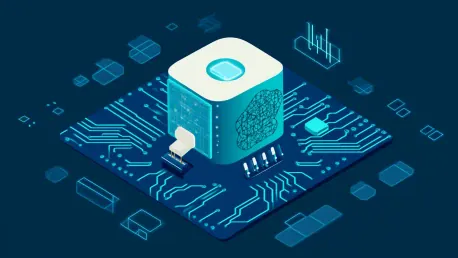The transformation potential of machine learning (ML) in hardware development is immense, especially through the lens of physics simulations. Traditional simulation methods, which rely on computational physics and centuries-old mathematical principles, are being challenged by the promising speed and accuracy of ML-based methods. This article explores how ML can revolutionize engineering processes, specifically hardware development, by achieving iterations at software speeds—a concept often dubbed ‘hardware iteration at software speed.’
Traditional Engineering Process and Its Limitations
In the current paradigm, hardware development is an iterative process starting with design, followed by analysis (simulation), prototyping, and testing. This process is time-consuming, with a single iteration potentially taking weeks or months. Current simulations, notably in fluid dynamics, involve discretizing models into vast meshes of elements and nodes. These require complex, iterative numerical solvers, making the process both time- and compute-intensive. For instance, evaluating solutions across millions or billions of nodes can take hours or even days, which significantly restricts the number of iterations feasible within typical project timelines.
The simulation market is dominated by established companies like Ansys and Siemens, whose tools are often outdated, using old programming languages like Fortran and failing to leverage modern hardware such as GPUs. This has led to a stagnant field, which is ripe for disruption. The significant time demand for traditional simulations restricts engineers’ creative freedom and hinders the exploration of innovative designs and optimization in software. The need for faster and more accurate simulation tools is imperative to unlock more iterative cycles in less time.
Emergence of ML-Based Simulations
Machine learning approaches can fundamentally alter the simulation landscape. Unlike traditional simulations, which rely on iterative computations across nodes to solve physical equations, ML-based simulations leverage pre-trained models. These models, trained on extensive traditional simulation data, can predict outcomes based on initial conditions much faster. This method drastically reduces computation times from days to mere seconds, thus allowing simulations at greater resolutions and enhanced accuracy.
ML-based simulations are not entirely unprecedented. For example, weather forecasting has seen significant advancements through AI. AI models from Huawei and Google DeepMind, for example, have demonstrated the ability to compute forecasts with much greater efficiency and comparable accuracy to the best traditional models. This reflects the potential for similar improvements in engineering simulations, opening up new possibilities for hardware development.
Numerous startups are emerging with novel solutions in this space, using various ML architectures. These startups aim to offer more general or domain-specific multiphysics simulation capabilities. Large companies like NVIDIA are also contributing with platforms such as Modulus, which allows users to select and train ML models for physics simulations. This diversity in approaches and tools promises to reshape the landscape of hardware development significantly.
Challenges in Adoption
Despite the impressive capabilities of ML-based simulations, widespread adoption is still in its infancy, hindered by several factors. Firstly, many hardware engineers are not fully aware of ML tools’ capabilities or their potential advantages over traditional methods. Most engineers also lack the training to effectively use ML-based simulations, having been trained exclusively in traditional tools. This lack of knowledge and skills creates a significant barrier to entry, slowing the adoption of these promising technologies.
Secondly, the lack of benchmarks makes it challenging for engineering leaders to properly evaluate ML tools. The “black box” nature of ML models, which do not always transparently employ physical principles, also breeds skepticism. Engineers are accustomed to understanding and controlling every aspect of their simulation tools, and trusting a machine learning model without enough insight into its mechanisms can be daunting.
Lastly, new platforms often come with steep learning curves, making them challenging for engineers without programming or ML knowledge to adopt. This complexity can result in premature abandonment of these promising tools. Therefore, it is crucial to address these barriers to truly realize the full potential of ML-based simulations in hardware development.
Promising Go-To-Market Strategies
Startups in the ML simulation space are experimenting with various strategies to counter these adoption barriers. Initially offering white-glove service or embedding engineers within client organizations can provide real-world feedback and improve user experience. This hands-on approach ensures that the tools are being used correctly and allows for immediate troubleshooting and optimization, making the transition smoother for engineers unfamiliar with the new technologies.
Providing free software to university teams, such as rocket or racecar groups, can help create future industry evangelists familiar with ML tools. Inclusion in university syllabi can also foster long-term adoption, as students trained in these technologies will naturally carry them into the industry. By targeting educational institutions, startups can build a solid foundation for future growth and adoption.
Positioning the product as an early-stage design tool can help startups establish an initial foothold. They can then expand their features to cover more of the product development process, building trust with engineers on their simulations’ accuracy. This strategy allows startups to build credibility and demonstrate the value of their tools before demanding complete reliance.
Focusing on more risk-tolerant sectors, such as automotive, or R&D groups within larger organizations, who are more open to new technologies and can champion these tools within their broader organizations, can also be effective. These groups are more likely to experiment with new technologies and can serve as early adopters who pave the way for broader industry acceptance.
The Path to Faster Hardware Iteration
The ultimate promise of ML in hardware development is the realization of hardware iteration at software speeds. This vision entails much shorter product iteration cycles, fostering greater creativity, and faster innovation. While the journey to this future involves tackling several challenges, including advancements in design processes and rapid manufacturing, the progress in ML simulations signals a promising start.
The integration of ML-based simulations can revolutionize the way products are designed, tested, and brought to market. By reducing the time and cost associated with traditional simulation methods, machine learning opens up new possibilities for innovation and efficiency. Engineers can iterate more quickly, explore more design options, and ultimately bring better products to market faster than ever before.
Future Considerations
The potential of machine learning (ML) to transform hardware development is enormous, especially when viewed through the lens of physics simulations. Traditional simulation methods are grounded in computational physics and rely on mathematical principles that have been established for centuries. However, these methods are now facing competition from ML-based approaches, which promise significantly improved speed and accuracy.
This article delves into the revolutionary impact ML can have on engineering processes, with a particular focus on hardware development. One of the most compelling advantages is the ability to perform iterations at software speeds—a concept often dubbed ‘hardware iteration at software speed.’ This capability can dramatically accelerate development cycles, allowing engineers to test and refine their designs much more quickly than before.
ML algorithms can handle complex simulations that would normally take extensive computing resources and time to complete using traditional methods. By leveraging large datasets and learning from them, ML can predict outcomes and optimize designs faster, reducing the overall time and cost involved in hardware development.
In summary, ML has the potential to redefine the way hardware is developed by offering faster, more accurate simulations. This leap forward could not only enhance the efficiency of engineering processes but also drive innovation, enabling the creation of more advanced and reliable hardware products in shorter timeframes.









